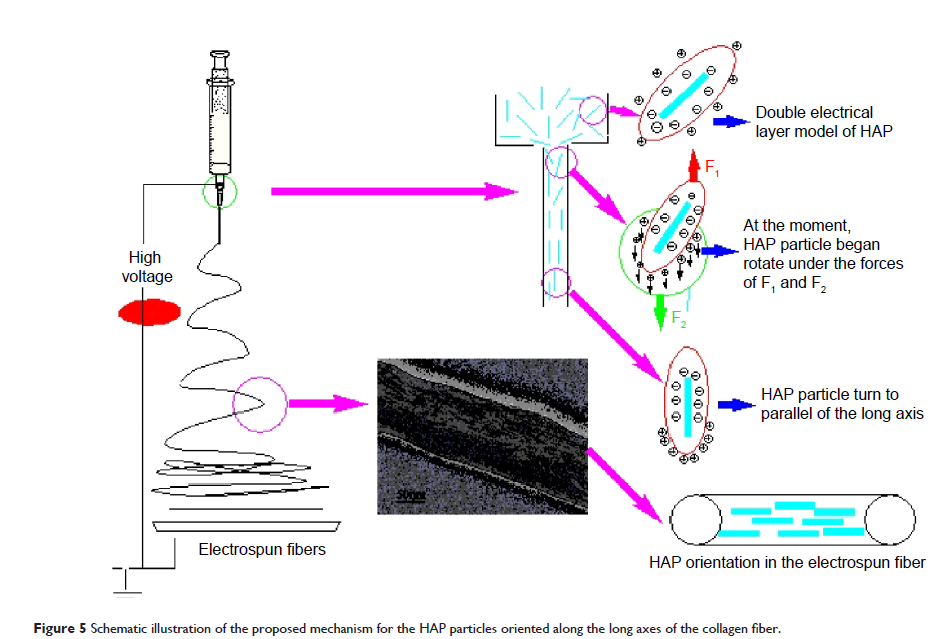9 0 5 7 8
论文已发表
注册即可获取德孚的最新动态
IF 收录期刊
- 2.6 Breast Cancer (Dove Med Press)
- 3.9 Clin Epidemiol
- 3.3 Cancer Manag Res
- 3.9 Infect Drug Resist
- 3.6 Clin Interv Aging
- 4.8 Drug Des Dev Ther
- 2.8 Int J Chronic Obstr
- 8.0 Int J Nanomed
- 2.3 Int J Women's Health
- 3.2 Neuropsych Dis Treat
- 4.0 OncoTargets Ther
- 2.2 Patient Prefer Adher
- 2.8 Ther Clin Risk Manag
- 2.7 J Pain Res
- 3.3 Diabet Metab Synd Ob
- 4.3 Psychol Res Behav Ma
- 3.4 Nat Sci Sleep
- 1.9 Pharmgenomics Pers Med
- 3.5 Risk Manag Healthc Policy
- 4.5 J Inflamm Res
- 2.3 Int J Gen Med
- 4.1 J Hepatocell Carcinoma
- 3.2 J Asthma Allergy
- 2.3 Clin Cosmet Investig Dermatol
- 3.3 J Multidiscip Healthc

已发表论文
具有优良的微观结构的更环保的静电纺丝胶原/羟基磷灰石复合纤维可用作骨组织工程材料
Authors Zhou YY, Yao HC, Wang JS, Wang DL, Liu Q, Li ZJ
Published Date April 2015 Volume 2015:10 Pages 3203—3215
DOI http://dx.doi.org/10.2147/IJN.S79241
Received 13 December 2014, Accepted 17 March 2015, Published 29 April 2015
Abstract: In bone tissue engineering, collagen/hydroxyapatite (HAP) fibrous
composite obtained via electrospinning method has been demonstrated to support
the cells’ adhesion and bone regeneration. However, electrospinning of natural
collagen often requires the use of cytotoxic organic solvents, and the HAP
crystals were usually aggregated and randomly distributed within a fibrous
matrix of collagen, limiting their clinical potential. Here, an effective and
greener method for the preparation of collagen/HAP composite fibers was
developed for the first time, and this green product not only had 40 times
higher mechanical properties than that previously reported, but also had an
excellent microstructure similar to that of natural bone. By dissolving type I
collagen in environmentally friendly phosphate buffered saline/ethanol solution
instead of the frequently-used cytotoxic organic solvents, followed with the
key step of desalination, co-electrospinning the collagen solution with the HAP
sol, generates a collagen/HAP composite with a uniform and continuous fibrous
morphology. Interestingly, the nano-HAP needles were found to preferentially
orient along the longitudinal direction of the collagen fibers, which mimicked
the nanostructure of natural bones. Based on the characterization of the
related products, the formation mechanism for this novel phenomenon was
proposed. After cross-linking with
1-ethyl-3-(3-dimethyl-aminopropyl)-1-carbodiimide
hydrochloride/N-hydroxysuccinimide, the obtained composite exhibited a significant
enhancement in mechanical properties. In addition, the biocompatibility of the
obtained composite fibers was evaluated by in vitro culture of the human
myeloma cells (U2-OS). Taken together, the process outlined herein provides an
effective, non-toxic approach for the fabrication of collagen/HAP composite
nanofibers that could be good candidates for bone tissue engineering.
Keywords: collagen, hydroxyapatite, electrospinning, nanofibers, biomaterials
Keywords: collagen, hydroxyapatite, electrospinning, nanofibers, biomaterials
